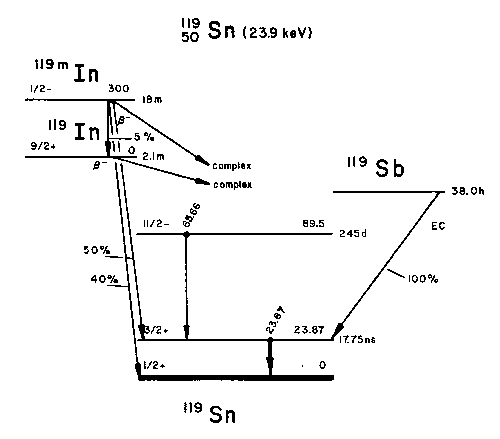 |
119Sn Mössbauer uses the 23.87 keV level which
is populated by the decay of 245 day 119mSn. As tin carries no local moment, we are using 119Sn Mössbauer as a non-magnetic probe of magnetic ordering. |
 |
119Sn Mössbauer uses the 23.87 keV level which
is populated by the decay of 245 day 119mSn. As tin carries no local moment, we are using 119Sn Mössbauer as a non-magnetic probe of magnetic ordering. |
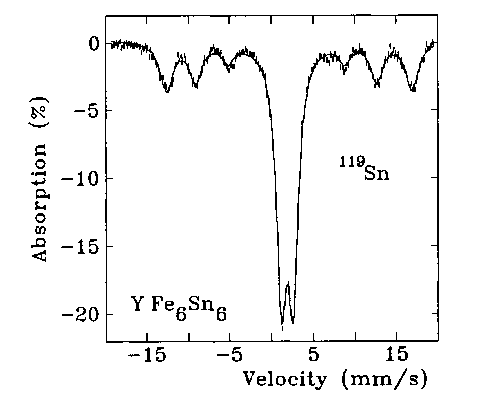 |
A simple example is provided by our solution of the
magnetic structure of YFe6Sn6. Three possible antiferromagnetic structures were possible from neutron diffraction data, but each gave different magnetic environments for the Sn atoms. The spectrum at the left shows that one third of the tin atoms have a transferred hyperfine field, an observation that is consistent with only one of the possible magnetic structures. |
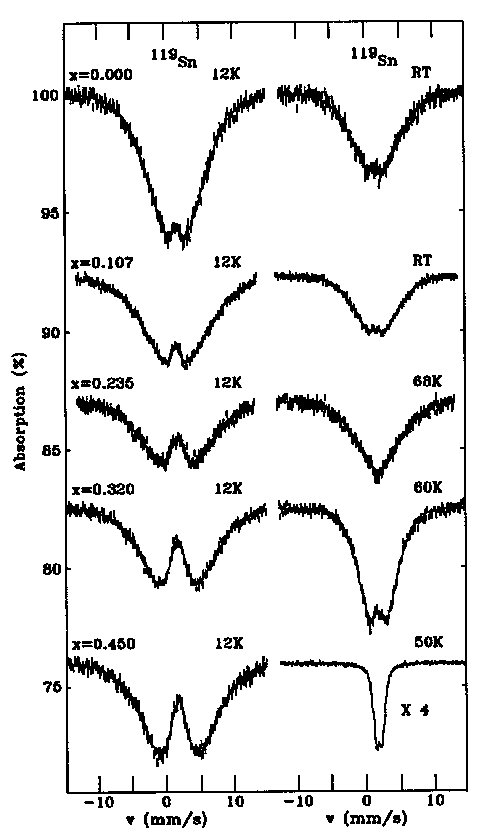 |
We have also used 119Sn Mössbauer to investigate ordering in frustrated magnetic materials such as a-(Fe1-xMnx)78Sn2Si6B14. These materials are amorphous, or glassy, and the Mössbauer spectra shown at the left exhibit much broader line than are seen in the YFe6Sn6 spectrum above. In the Fe-Mn glass system, we have been able to show that the Mn and Fe moments order anti-parallel to each other at Tc, and that when the transverse spin components order at Txy, they exhibit short-ranged antiferromagnetic correlations. Remarkably, these short-ranged correlations persist even in samples that are so frustrated that long-ranged magnetic order is absent. |
A number of Gadolinium-based intermetallic compounds (e.g.
Gd5(Si1-xGex)4)
have been
identified that exhibit a giant magnetocaloric effect. There is
a large entropy change concentrated at a magnetic ordering event
that appears to be associated with a first-order structural
transformation. These materials may have applications in magnetic
refrigeration.
Our interest has focussed on tin-containing analogues of these materials
as they are accessible to Mössbauer spoectroscopy, and we have also
been replacing the Gd with other rare-earths in order to do neutron
scattering experiments.
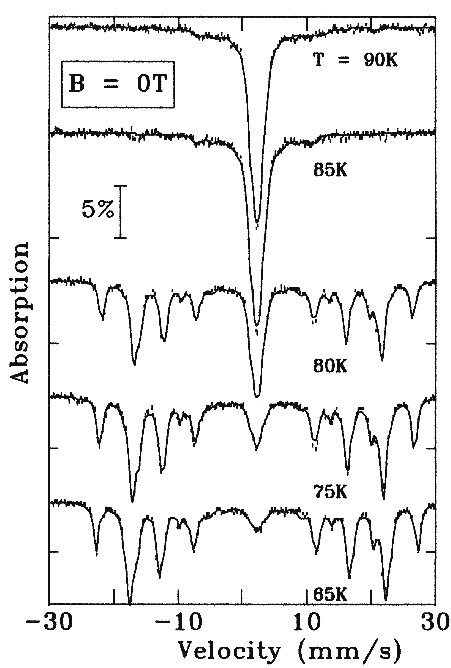 |
In zero magnetic field the Mössbauer spectra of Gd5Sn4 show two tin sites with remarkably large magnetic splittings (38T and 31T at 9 K), however, on heating through 83 K, this splitting is lost abruptly as the compound undergoes a first-order structural transformation to a non-magnetic form. |
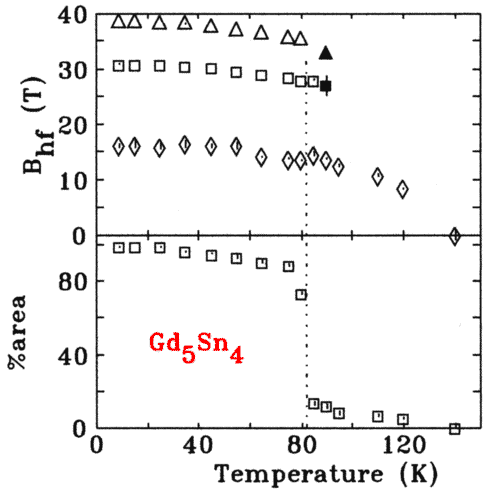 |
The hyperfine field declines slowly on heating as expected for any magnetic material, and extrapolation of the decline suggests an ordering temeprature of about 200 K. However, this decline is interrupted at about 83 K and the magnetic components are lost. |
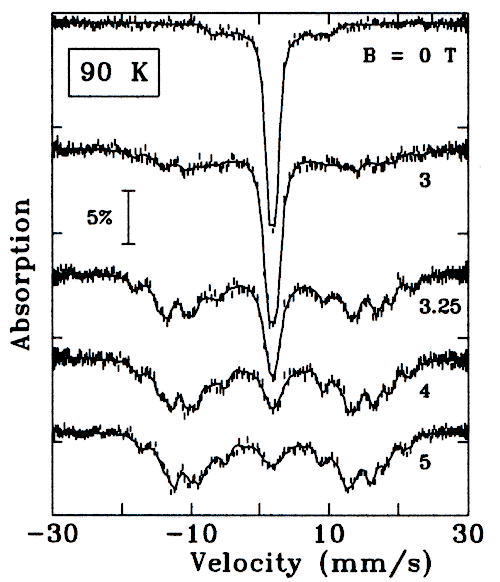 |
The spectra measured at 90 K (above the structural transition) show that the collapse of the magnetic components can be reversed throught the application of a modest magnetic field. By 3.25 T it is clear that the original magnetic pattern is being restored. |
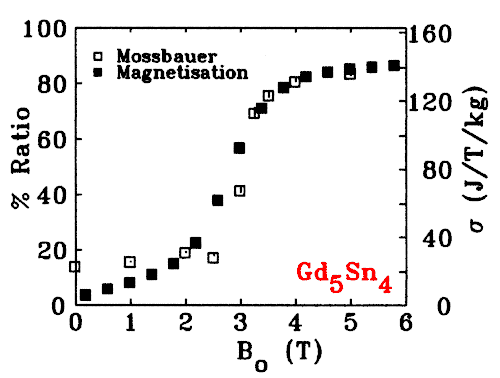 |
Comparison of the magnetic area in the Mössbauer spectra with the bulk magnetisation confirms that the marked increase in magnetisation around 3 T is associated with the re-growth of the low-temperature magnetic form. |
Updated: 06/May/03
All photographs copyrighted by:
Dominic Ryan, ERP 425, (514) 398-6534